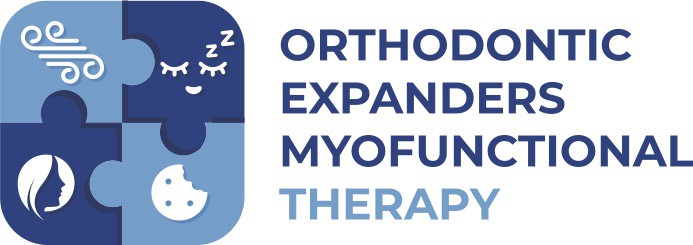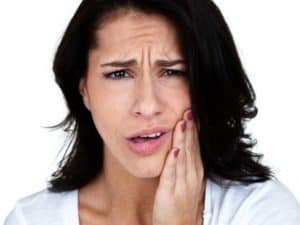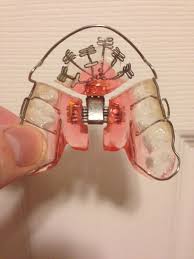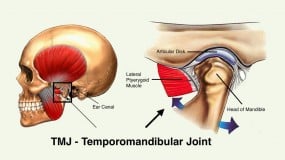What is the Root Cause of TMJ Pain?
What is TMJ or TMD?
40% of people suffer from some form of jaw tension and pain. The pain can be nagging or quite debilitating. The disease has a medical and dental definition, but most of the time people say they have “TMJ” when they suffer from any symptoms such as night time and daytime teeth clenching along with some or all of the symptoms listed below. Advancements in TMJ treatment technology have led to a better understanding of what causes temporomandibular joint dysfuction and a cure for pain. 80% of people who clench their teeth and suffer from tmj pain have undiagnosed sleep apnea and airway problems. Airway problems during sleep is actually the cause of teeth clenching during sleep. People will clench their teeth in an effort to wake themselves from a deep sleep when they are not getting enough oxygen. It is a defense reflex against airway obstructions and collapse. The most common airway obstruction during sleep is the tongue which has a tendency to be displaced into the mouth when there is not adequate space in the mouth. The key to curing TMJ is correcting airway problems, so people breathe better at night, sleep better and do not clench their teeth.
What Are the Symptoms of TMJ:
- Jaw soreness and tension especially in the morning
- Jaw joint popping and clicking
- Limited opening and range of motion of jaw joints
- Teeth wear, cracking. history of past root canals, tooth implants, crowns and fillings by the gum line
- Gum recession
- Loose teeth
- Ear symptoms, feeling of fluid in the ear or it needs to pop and sometimes loss of hearing and tinnitus
- Unstable tooth position. Constant need for retainers, teeth that are always shifting
- Sleep apnea
- Poor Sleep
- Tied Tongue or Tied Lip
- Headaches, possibly migraines, especially in the Temporal area and up around and behind the eyes
- Sinus Pressure or feeling of having a Sinus Infection
- Neck and shoulder tension, upper back pain
- Poor Posture
Treatments for TMJ Video by Dr. Gary Adams
Meet Dr. Adams

The DNA appliance is an example of a facial growth appliance. “Growing” the mouth and airway is the key to curing TMJ. Other growth appliances do exist such as the Homeoblock and AGGA devices. Growth appliances are worn for a period of time, at which point the condition should be corrected and there should be no further need to wear the appliance. Growth appliance therapy typically lasts 9 months to 3 years depending on the severity of the condition.
A Holistic Approach to TMJ and Airway Problems
Call Us Today 301-421-1996 for a no cost consultation and assessment with Dr. Adams. Dr. Adams has a holistic and non-surgical approach to TMJ treatment. “Holistic” meaning, he looks at the entire person and determines the underlying cause of the problem. Most of his patients get better and no longer have pain or need to wear night guards and other night time appliances.
Treating the Root Cause of TMJ and Bruxism
Our goal is to correct the root cause of tmj problems. Recent advancements in tmj treatment options, provide much more than temporary relief. Band-Aid-like treatments such as night guards mask and mitigate the problem. Our unique holistic approach to dental therapy gets people better for good and without the need for surgery. The key to success is identifying the cause of the pain and using targeted therapies and exercises to improve the problem. Dr. Adams will determine the source of your jaw pain and problems. He then develops a treatment plan that provides a solution to all your pain – not a piece of plastic you sleep with for the rest of your life.
More on Forward Growth Appliance Treatment
“One of the most effective appliances is the DNA by Vivoslife.” The difference in the DNA and most other conventional appliances is that it is a correction therapy. Growth appliances in general can
- enlarge space available for the tongue
- Jaw and bite balance
- Improves facial profile
- Improves breathing and airway
- Improves Sleep Apnea
- corrects jaw position such as retrognathia
- Eliminates teeth clenching and TMJ pain
Anterior Growth Corrects Airflow and TMJ Biomechanics
If designed properly and worn, forward facial growth can get people better. By contrast, most other appliances and treatments will result in an appliance being worn indefinitely at night time and only managing teeth clenching. Conventional appliances such as night guards and splints will slow wear and tear on the teeth, but clenching still occurs on the appliance. Normally people will stop wearing night guards because they are not comfortable and jaw pain can actually worsen when the appliance is worn. Often night guards cause more clenching since they take up valuable space in the mouth, crowd the tongue and provide no balancing effect for the bite and jaw muscles.
Vivos DNA Appliance Therapy can improve and in many cases cure:
- TMD Symptoms – jaw popping / clicking and soreness, neck pain, migraine headaches, sinusitis pressure and pain
- Sleep Apnea – The appliance helps the jaws grow larger, creates space in the jaws and facial bones for proper breathing, tongue space and position.
- Postural problems – neck pain, shoulder blade, back pain, tight trapezius muscles
- Orthodontic problems through holistic orthodontics
Additional Causes of TMD:
- Upper Airway Resistance Syndrome (UARS) is caused by a small mouth, small nasal passageways and crowded tongue, teeth and tonsil spaces. Clenching is often the body defending your airway from obstructions such as a large tongue. During deep sleep all the muscles in your body relax and become flaccid including the tongue. When the tongue does not have enough space to fit properly in the mouth, it settles into the throat and gets in the way of night time breathing. That is when the clenching starts and you wake up into a lighter sleep. In lighter sleep, the tongue regains its muscular tone and comes out of the airway. In deep sleep, the tongue is relaxed and flaccid at which point it goes where it fits which is deeper into the throat. 77% of people who clench their teeth during UARS, do not know they are doing so. When the problems get much worse, the symptoms of TMJ start to become more noticeable. People who suffer from UARS symptoms should be tested for sleep apnea. 77% of people with sleep apnea suffer from severe TMJ symptoms. Vivos DNA appliance therapy is just what the doctor should order. It will balance the jaw relationship and open up space in the mouth and upper airway for better tongue space and breathing.
- Bad Bite that is not comfortable. When spaces in the mouth are tight, the teeth tend to fit poorly and the bite is not comfortable. A bad bite alone is sometimes enough to cause tooth clenching and painful jaw joint and muscle symptoms.
- Stress and poor work conditions are major contributing or exacerbating factors, but they do not cause symptoms or pain alone.
DNA appliance therapy is a novel treatment. The jaw device balances the bite and opens small obstructed airways by stimulating them to grow wider internally. The appliance has many uses but Dr. Adams uses it in many cases to correct and cure the conditions that cause TMJ pain and UARS disease.
What is the Temporomandibular Joint?
The temporomandibular joint is the joint that literally connects the jawbone to the head. The jaw bone is the mandible and the head consists of several bones including the maxilla, zygoma, sphenoid and temporal bone. tmj is an acronym for temporal mandibular joint or literally the joint that connects the mandible (lower jaw) to the temporal bone at the base of the head. The joint is located and a crevice in the temporal bone called the glenoid fossa. The joint rotates and slides down and forward in its open position. It is the only joint in the body capable of 3D movement. All other joints in the body either hinge open and closed or rotate in a socket. The temporomandibular joint is the most complex joint in the body. The neuro-musculature about this jaw joint plays a key role in overall posture and dictates how the head sits on the vertebral column.
TMJ Pain is Usually caused by Something Outside the Joint
Paradoxically, while the discussion is “tmj-tmd”, the problem or symptoms we call “tmj” normally are caused by dysfunction in areas surrounding the joint with impact on the entire body. That is, the jaw-joint itself is rarely the actual problem or the true source / cause of the pain. Treatment and therapy to all the anatomy and function surrounding the jaw joint is the key to treatment and every case is not the same. The approach to treatment will rarely be the same from one person to the next who has this problem. Most of the painful symptoms stem from poor jaw position and tooth clenching, but the million dollar question is “why do people clench their teeth?” “How can we correct the cause of tooth clenching?” How can we create rest, space and comfort about all this head and neck tension? The answer lies in the balance between the biomechanics of the jaws, the fit of the teeth, the physiology and function of the upper airway and the tongue, sleep and vertebral posture.
How are Jaw Disorders Diagnosed?
Usually, the patient can diagnose themselves, but the condition is confirmed by a specially trained dentist or medical doctor. The doctor will usually look at the
- relationship of the upper and lower jaws,
- how the teeth fit top to bottom to determine if the bite is off.
- look at the airway,
- tongue position,
- sleep
- overall posture
- muscle patterns relating to chewing, head-neck movements, stride and breathing patterns
- evaluation of the jaw joint to see if there is any popping, clicking or asymmetric movements
- range of motion of key joints including jaw joints, neck, shoulder, ribs and hips.
Teeth and Jaw Clenching link to Sleep Apnea?
Yes. 77% of people who have Sleep Apnea have temporomandibular pain. The root cause of symptoms is related to airway problems and improper breathing function at night time. When there are night time airway problems, it initiates the clench reflex and here in lies the cause of all our problems. 80% of people who “clench their teeth” do not know because they are asleep. The clench reflex usually does not wake the person up all the way but rather into a lighter sleep where the tongue and other “obstructions” regain muscular tone and the airway becomes mostly patent again.
Temporomandibular Pain is often Diagnosed incorrectly and Treated as chronic idiopathic pain with Drugs
Temporomandibular syndrome (TMS) is often misdiagnosed as other things such as ear or sinus Infection. Others have migraine headaches and think they are just chronic migraine headache sufferers. It is common for people to “tolerate” Jaw tension, tooth clenching and believe they are “too stressed out” or “work too much at a computer or desk.”
TMS patients have often seen many professionals including neurologists, chiropractors, physical therapists and ENT doctors. Many times the diagnosis is missed or the patient receives migraine drugs for headaches from the neurologist. TMS symptoms can be treated and cured by a properly trained and experienced specialist.




